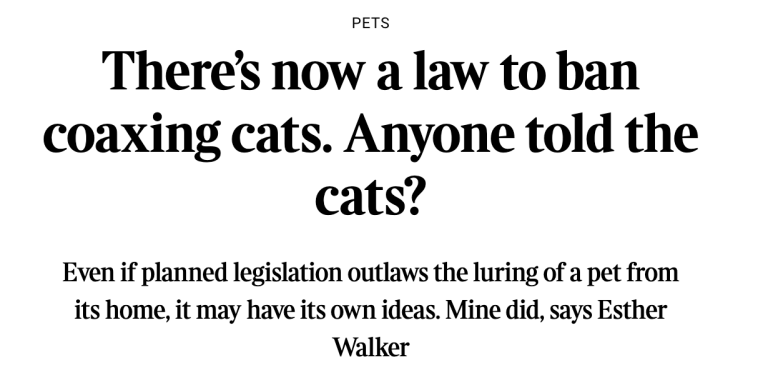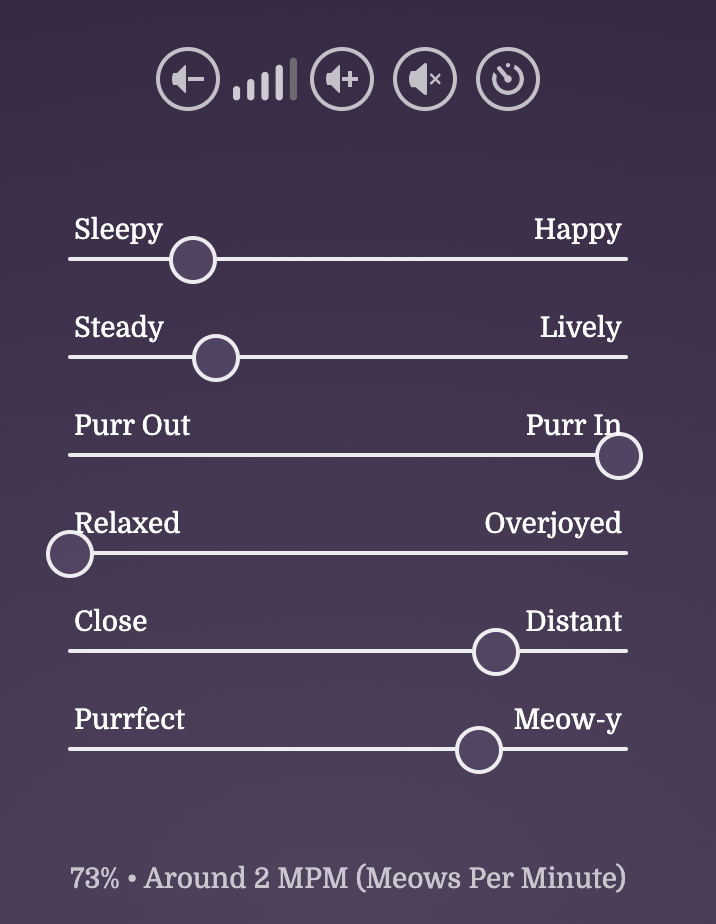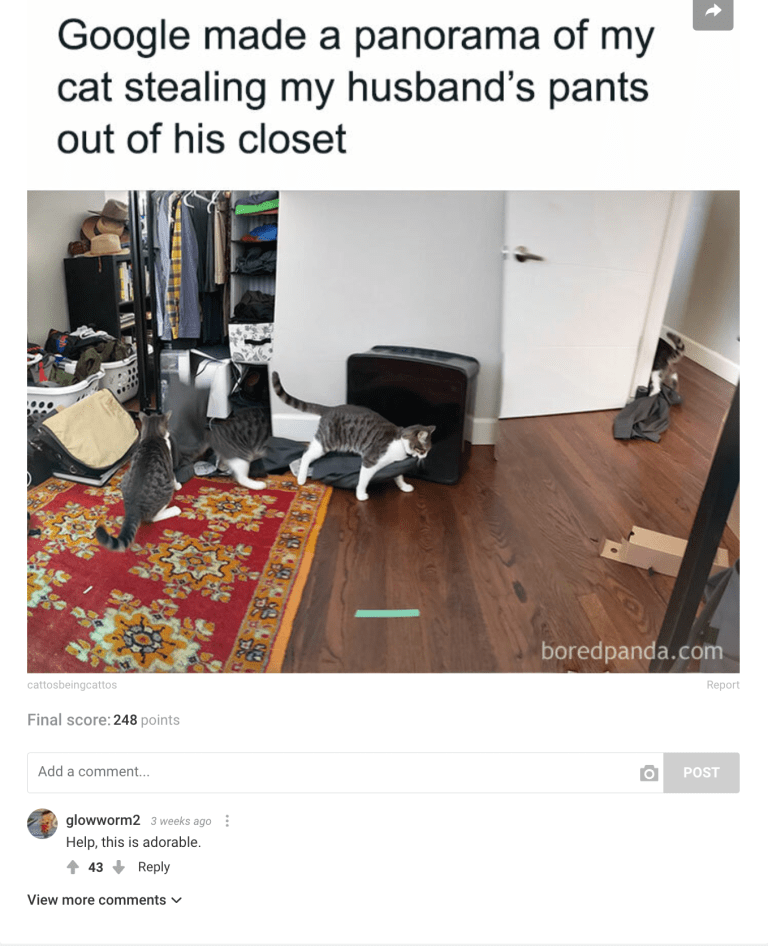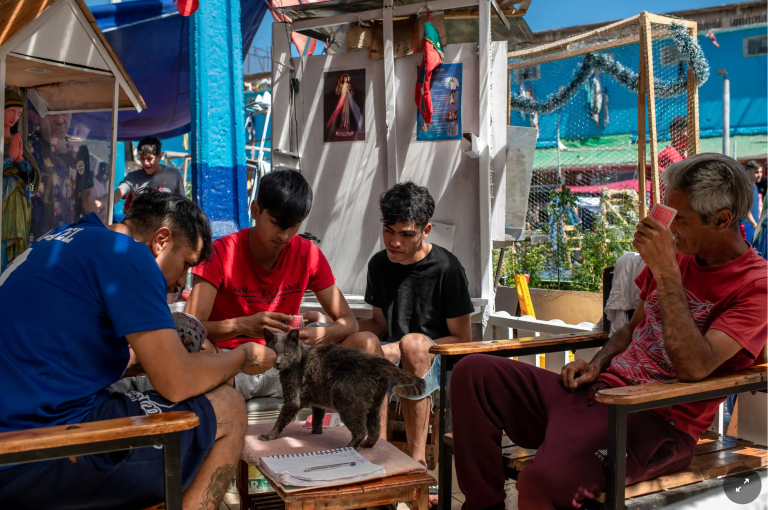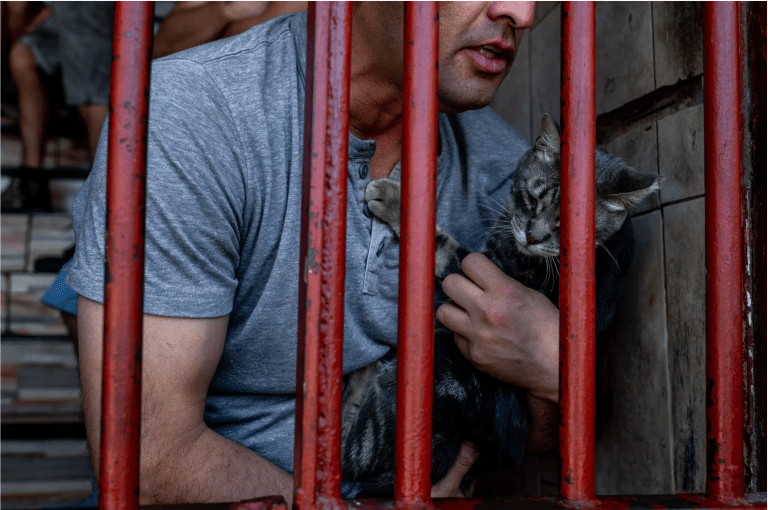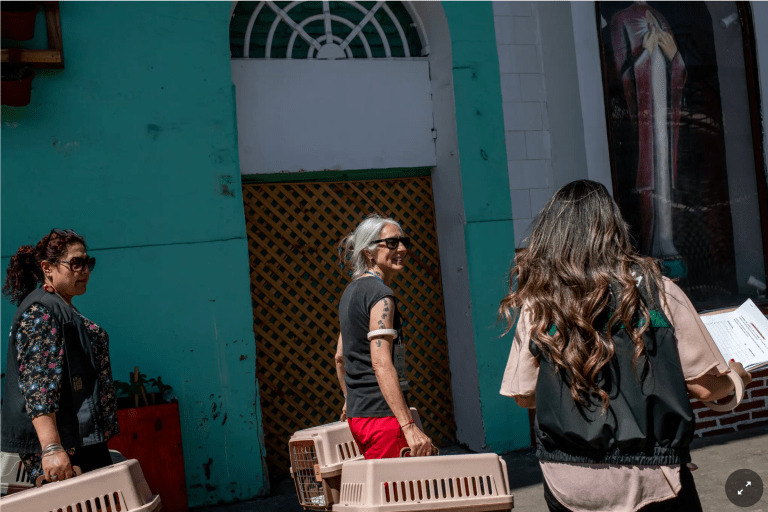Is your cat’s birthday coming up? Here are two articles on how to make your moggy a cat-friendly birthday cake. The first is from The Spruce (click to read):
And this one is from PetsRadar (also click), whichs gives eight different recipes of varying degree of laboriousness. I’ve put an easier one below, which is similar to the one from the link above.
From the Spruce, an easy tuna-cake recipe that takes only 5 minutes and costs $10 (but you’ll need a piping bag):
What you’ll need:
Equipment / Tools
- 1 1/4 Measuring cup
- 1 Plate
- 1 Piping bag
- 1 Knife
- 1 Birthday candle (optional)
Materials
-
1 cup Canned albacore tuna
-
1 cup Cooked, unseasoned chicken
-
1 cup Pureed sweet potato
-
1 cup Mashed potatoes
-
1 Catnip
It comes out looking like this (there’s catnip sprinkled on the top):

And here’s another one from the second site, a salmon and sweet potato cake. But they left out the salmon and gave a tuna recipe. So I went to the Daily Paws and got their recipe, which this site supposedly copied. But they screwed up. Here’s the good recipe; I think any cat would like it so long as they like sweet potato:
Ingredients
- ½ 5-ounce can chunk-style skinless, boneless salmon in water, drained well
- ¼ cup finely chopped cooked chicken or turkey breast
- ¼ cup mashed sweet potato
- 1 teaspoon rice flour
- 2 tablespoons plain yogurt*
- 1 teaspoon natural creamy peanut butter* (optional)
Directions:
Step One
Line a small baking pan with wax paper.Step Two
Place salmon in a medium bowl. Flake chunks into very small bits. Add chopped chicken and mashed sweet potato and mix well. Stir in rice flour.Step Three
Place a lightly greased 3-inch round cutter on the baking pan and spoon 1/3 cup salmon mixture into the ring. Using fingers, firmly pat mixture out into an even layer. Carefully remove ring and repeat with remaining salmon mixture. Place pan in freezer for 15 minutes to firm up the patties.Step Four
To assemble cake, place one patty on a small plate. Spread with the peanut butter and top with another patty. Decorate top of cake with the yogurt, letting it run down the sides of the cake to create the drip cake effect.Recipe courtesy of Daily Paws
And the Daily Paws video showing you how to make it:
I hope at least one reader will make a cake for their cat’s birthday (doesn’t every cat have a birthday?). Weigh in if you’ve made one.
****************
Archived from the Times of London, we hear about a law to ban “coaxing of cats.” It’s bizarre but probably of marginal value.
Click to read:
Some excerpts:
Listen, cat people are a bit shady. Not very, just a bit. I know this because I’m a cat person and in the right circumstances, I can be a bit shady. Most cat people are consciously or unconsciously aware of their shadiness and don’t do things like coax random cats off the street with dishes of cream and teaspoons of tuna. Because although we quite want to (because we are shady), we know that it is wrong.
But there are always deviants who spoil things for everyone. Every area has a local catnapper, who doesn’t think what they are doing — coaxing random cats off the street with cream and tuna — is bad.
And this is why the new Pet Abduction Bill is important. The bill, which is supported by the government and making its way through parliament, would make abducting a cat or dog punishable by up to five years in prison, a fine — or both.
But there are always deviants who spoil things for everyone. Every area has a local catnapper, who doesn’t think what they are doing — coaxing random cats off the street with cream and tuna — is bad. And this is why the new Pet Abduction Bill is important. The bill, which is supported by the government and making its way through parliament, would make abducting a cat or dog punishable by up to five years in prison, a fine — or both.
Pet abduction with regards to felines is defined in the bill as “causing or inducing the cat to accompany the person or anyone else” or “causing the cat to be taken”.
Due to the evidence required to convict, the crime of pet abduction as it relates to cats will be difficult to enforce and many will be wondering why the government has bothered.
Max Hardy is a criminal barrister. He says: “As a general rule offences that are effectively unenforceable make for unhelpful additions to the statute book. Some take the view that the existing Theft Act legislation sufficiently encompasses any situation in which a pet is stolen or an attempt is made to steal.”
OK, but we the public think of “stealing” as a sudden snatching or taking permanently. Most cats are “stolen” by non-permitted feeding or, in other words, “inducing”.
“It may be that the new offence will be considered to be sending a message that taking or trying to take a pet is a worse crime than taking an inanimate object,” Hardy says. “One assumes the message will go out that food should never be provided to or left out for a pet that is not your own. That does have the potential to mitigate neighbour disputes, if nothing else.”
Oy, I’ve been guilty in days of yore of feeding a neighbor’s cat. Good thing I’m not in Britain! And here’s some stuff about British cat law:
This is one reason cat people appreciate cats so much: because they have free choice, if they choose you it’s a sort of blessing. This is also why, historically, cats were not seen in the eyes of the law as “property” in the same way dogs were — because who can keep tabs on a cat?
This changed in 1968 with the Theft Act and now cats enjoy the same “property” status as dogs. In 2021 the government announced plans to make microchipping mandatory — all cats must be chipped by the time they are 20 weeks old.
The Theft Act, the mandatory chipping and this new abduction law are all important to any cat owner who has an outdoor cat. Indoor cat owners wag their fingers and say, “This is why I keep my cat indoors,” but a) this isn’t always practical, and b) being trapped in a house is the personal nightmare of outdoor cat owners and it is why they can’t inflict it on their pet. No one is right or wrong in this debate and if you choose to have an outdoor cat, you can still object to others seducing it away from your home.
The lesson: don’t feed a friendly moggy, even if it lives next door:

*********************
This is probably not a great thing to do to your cat, but somebody went to a great deal of trouble to make a costume fitting a human but looking like the cat. There are even paw-like slippers and gloves. What do you think the cat will do when it sees its staff as a huge doppelgänger?
Watch that tail bush out in fright! But then the cat shows some ambitendency and winds up aggressive—and then even friendly! I think it smells its staff inside the costume.
**************
Lagniappe: synchronized kitties:
h/t: Ginger K., Merilee



